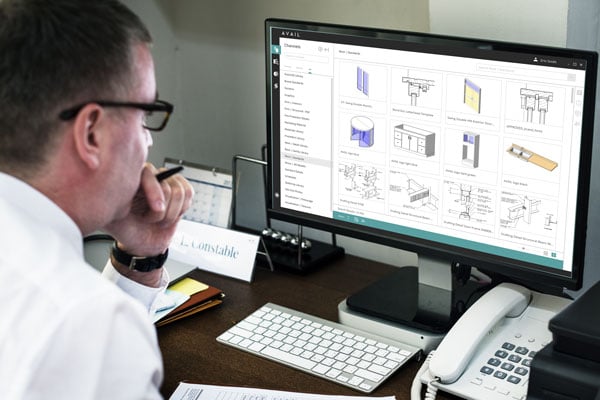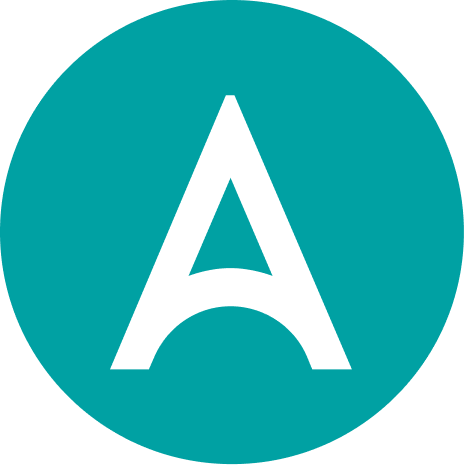
The possibilities for AI and ML are just starting to come into focus. At AVAIL’s Confluence San Francisco 2025 event in April, 45 architecture, engineering, and construction (AEC) technology leaders gathered to discuss the AEC industry’s progress in implementing these technologies and the practical applications they’ve uncovered so far. We’ve put together key takeaways from each presentation below. Our next event, Confluence Lexington, is October 9,10, and 11, 2025.
Jump to
- How Chaos Uses AI to Assist Designers
- Sidebar: Legal Challenges with AI
- Knowledge Architecture Leverages Internal Expertise with AI
- AVAIL Uses AI to Suggest Related Assets
- AI in Action at Olson Kundig
Progress in AI and ML
AVAIL is passionate about leveraging technology advancements to improve our content management solutions and started hosting Confluence events in 2019 as a way to explore what architecture, engineering, and construction (AEC) industry firms are needing, wanting, and thinking around technology.
Confluence San Francisco 2025 in April was AVAIL’s third single-day regional event to bring the insights from our signature Confluence Lexington event to a wider audience.
Confluence San Francisco speakers included Bill Allen from 3D visualization technology company Chaos, Christopher Parsons from knowledge management software company Knowledge Architecture, Randall Stevens from AVAIL, and Kenton Grant and Gavin Argo from global design firm Olson Kundig.
The day began with the technology company speakers sharing how they are currently exploring AI technologies in their products today to augment workflows, unlock knowledge, and ultimately, drive better design and construction outcomes.
Then, Kenton and Gavin from Olson Kundig—which is a customer of all three of the represented technology companies—shared their perspective from the firm side: how they are assessing and starting to utilize these emerging tools.
Explore our speakers’ key insights below.
 AEC innovators: Confluence attendees came from across the AEC industry to include representatives from firms such as Olson Kundig, Flad Architects, RMW Architecture & Interiors, Hart Howerton, Taylor Design, BAR Architects & Interiors, EHDD, and DGA; technology companies such as AVAIL, Egnyte, Chaos, Knowledge Architecture, TonicDM, Skema, Webphy, Hypar, and Lynn Imaging; media partners like TRXL and PSMJ, and educational institutions like Harvard Extension School.
AEC innovators: Confluence attendees came from across the AEC industry to include representatives from firms such as Olson Kundig, Flad Architects, RMW Architecture & Interiors, Hart Howerton, Taylor Design, BAR Architects & Interiors, EHDD, and DGA; technology companies such as AVAIL, Egnyte, Chaos, Knowledge Architecture, TonicDM, Skema, Webphy, Hypar, and Lynn Imaging; media partners like TRXL and PSMJ, and educational institutions like Harvard Extension School.
How Chaos Uses AI to Assist Designers
.png?width=120&height=180&name=Bill%20Allen%20-%20chaos%20(1).png)
- AI-powered visualization and rendering:
Bill discussed tools like Veras that use AI to generate visualizations and renderings directly from a project's 3D model and prompts, instead of the traditional manual process. This allows for faster iteration on design ideas and reduces the time-consuming steps of applying materials, lighting, post-processing, etc.
- Integrating AI into design software:
Bill emphasized the importance of integrating AI tools directly into the architects' existing design software like Revit, Rhino, SketchUp, etc—as Chaos has done with Glyph. This allows architects to leverage AI capabilities within their familiar workflows, rather than having to switch between different tools.
- Automating tedious tasks:
Glyph uses AI and the Revit API to automate tasks like creating elevations, dimensioning, tagging, and sheet creation. This aims to streamline the tedious, repetitive tasks involved in producing construction drawings.
Legal Challenges with AI
Bill took a moment during his session to discuss pressing legalities of AI in AEC, specifically using AI for image generation.
The big question? Is AI “collaging” existing photos and thus violating copyright laws?
Overall, the legal landscape around AI and copyright is still evolving, but Bill believes the technology can be used ethically and legally in the AEC industry. Specifically in this example, Bill says this technology is actually a diffusion-based process, not collaging, so it may not actually violate copyrights.
Diffusion-based technology, he explained, is like when people look at clouds. We say, “this looks like an astronaut riding a horse.”
“This technology works the exact same way,” Bill said. “It takes your building, and it goes, ‘that kind of looks like a tree’, ‘that looks like a canopy,’ ‘this looks like a person.’” It then takes that substrate and combines your building with the prompt to produce a rendering of that.
AEC innovators should definitely consult an attorney with pressing questions, but to help establish that the output from AI is your own, Bill advises contributing to the final image and using your own project models and content as the starting point for AI generation.
 Boulder Associates' Todd Henderson debriefs with PSMJ’s Jerry Guerra and Taylor Design’s Hector Soriano following a Confluence San Francisco educational session.
Boulder Associates' Todd Henderson debriefs with PSMJ’s Jerry Guerra and Taylor Design’s Hector Soriano following a Confluence San Francisco educational session.
Knowledge Architecture Leverages Internal Expertise with AI

- AI-powered knowledge search and retrieval:
AI search engines like Knowledge Architecture’s Synthesis are being used to quickly surface relevant information from a company's knowledge base to answer employee questions. The AI can pull key details for employees to learn from like videos, documents, and other content to provide concise, contextual answers, rather than forcing employees to sift through hours of non-relevant material. It also identifies subject matter experts within the organization that employees can reach out to for additional help.
- Scaling expert knowledge with AI’s help:
Sharing an example from Boulder Associates, Chris discussed how companies are using AI to capture and preserve the knowledge of a firm’s subject matter experts through recorded interviews. The AI transcribes the interviews and analyzes the content to extract key insights, best practices, and recommendations that can be shared more broadly across the organization. This allows the company to scale the expertise of a few individuals to benefit the wider team.


AVAIL CEO and Founder Randall Stevens started hosting Confluence events in 2019 to explore how AEC industry firms were thinking around technology.
AVAIL Uses AI to Suggest Related Assets

- Using AI and ML to identify and structure data:
For the past two years, AVAIL has begun leveraging AI technologies to augment and replace traditional optical character recognition (OCR) techniques and leverage large language models (LLMs) to identify information found in the data AVAIL already has access to, such as file names, folder names, and thumbnail images. Then, the team set out to create structure and context around the more than 25 million files indexed in AVAIL. With these efforts, AVAIL makes assets like construction details, Revit Family files, and drawings more searchable in its CMS and, thus, actionable for a suggestion engine as described below.
- Applying context to offer smart suggestions:
With all the information that is now extracted and structured in the methods above, AVAIL is developing a suggestion engine in its CMS that can proactively surface relevant content to users based on the current project context, like the specific building type, space, or room they are working in. Surfacing the right information at the right time can improve productivity at firms greatly.
.png?width=280&height=210&name=The%20Next%20Generation%20of%20AVAIL%20Harvest-Effortless%20Detail%20Management%20(1).png)
AI Categorization Yields Effortless Detail Management in AVAIL
With its newest version of Harvest for Revit, AVAIL is leveraging AI technology to intelligently categorize data from Revit container files, making details instantly searchable and accessible in AVAIL.
AI in Action at Olson Kundig
The true test of the AI-powered tools discussed above is when they get in the hands of AEC industry firms like global design firm Olson Kundig. How are firms assessing these tools? What does it take to get them adopted into production workflows?
Kenton Grant and Gavin Argo’s Confluence session Demystifying AI and How Olson Kundig Integrates Technology discussed the firm’s culture of exploration and experimentation, as well as its thoughtful integration of AI within the practical realities of their architectural practice. “Our office is very much a laboratory for our architectural practice,” Gavin said. It's a place to experiment with their ideas. Here are a few takeaways from Gavin and Kenton's session:
- Assessing AI through exploration, experimentation, and education:
Olson Kundig promotes a culture of curiosity which involves individuals and teams “playing with” the new technology tools available to them. To give a sense of the Olson Kundig culture, Kenton said that a third of the Olson Kundig office is in a special Teams chat for sharing and discussing AI-generated images. This organic movement at the firm to “play” with AI and ML technologies eventually led to the creation of an official AI Stewardship Group that additionally helps raise awareness, provide training, and facilitate discussions about the use of AI across the organization.
- AI tools that made the cut at Olson Kundig:
Language Models: ChatGPT, Miro, and Grammarly tools are commonly used across the firm, and tools like UpCodes Copilot, Mistral AI, and Llama are being tested at scale or for specific use cases.
Machine Learning: Forma and Grasshopper Tools are used across the firm.
Diffusion/Images: To support design presentations and client proposals, the firm has used AI-generated imagery and videos. Midjourney, Adobe Firefly, and Magnific are used across the firm, and Stable Diffusion, Dall-E, RunwayML are being tested at scale. Gavin and Kenton spent a lot of time discussing Olson Kundig’s use of Midjourney and Stable Diffusion to quickly generate conceptual design options and mood boards, which deeply reflect the designer behind the renderings. They also discussed the team’s “play” with mnml.ai to help teams efficiently create and coordinate visualizations that can convey design intent to clients. Diffusion models are great for helping designers tell a story quickly, Kenton and Gavin noted.
Base Platforms: Zoom AI is used across the firm.
While implementation of the above tools has been successful at Olson Kundig, “we're not all in on any specific tool,” Gavin noted at the end of the presentation. “Our office is always looking for ways with those implementations to bring in our design skills and, frankly, our humanity back to the front and center of the conversations.” Olson Kundig views the integration of technology, including AI, as an ongoing process to evolve and enhance their design process to better serve clients.

The Confluence San Francisco group continued the conversation at a social held at partner Brick & Mortar’s San Francisco office.
TRXL Podcast's Evan Troxel with AICAD's Matt Stewart and Adam Owais.

Knowledge Architecture's Christopher Parsons (middle) with Olson Kundig's Gavin Argo and Kenton Grant.

Hart Howerton's Harrison Daigle and AVAIL's Randall Stevens.

EHDD’s Jason Barish and Juliet Rubio with Undisclosed Society’s Etienne Freeman.
Continuing the Conversation
Join the AEC industry’s most influential technology leaders by becoming a part of the Confluence community. Between the Confluence Podcast—hosted by AVAIL’s Randall Stevens and TRXL Media’s Evan Troxel—and the in-person events, Confluence programming is designed to foster conversations between AEC industry firms and technology companies, so they can learn, share, and engage with each other to support AEC innovation. Explore ways to stay connected below.

Confluence Podcast
An extension of the event series, the Confluence Podcast explores technology used by and developed for AEC industry firms. Now in its second season, the podcast has recently featured Richard Harpham of Skema, Robert Otani of CORE Studio at Thornton Tomasetti, and Carl Veillette of Newforma, among many others.
Explore all Confluence Podcast episodes

Next Event: Confluence Lexington 2025
Following the success of Confluence San Francisco, we are thrilled to turn our attention to AVAIL’s signature Confluence Lexington event, scheduled for October 9-11, 2025.
The theme of this three-day, invite-only professional development event is AEC Platforms: Elevating the Dialog.
Within AEC industry firms, technology platforms all too often exist as disparate silos of information. Confluence Lexington 2025 will explore how we can increase the dialog between various platforms, reducing redundancy and bringing the silos together in new ways.
Learn more about our plans for October, and register interest in joining us in beautiful Lexington, Kentucky.

What is Confluence? Discover the event series' history
Many thanks to our Confluence San Francisco 2025 sponsors, Egnyte, Knowledge Architecture, Chaos, ArchVision, AVAIL, Brick & Mortar Ventures, and TRXL.
About Confluence
Hosted by software company AVAIL, Confluence is a series of architectural, engineering, and construction (AEC) industry professional development events that bring design technology and product management leaders together in collaborative discourse. Its signature conference, Confluence Lexington, is a three-day, invite-only event themed around a pressing industry technology issue and held in the fall every year. In the last few years, regional, one-day events have also been added, as well as a podcast hosted by AVAIL CEO and Founder Randall Stevens and TRXL Podcast host Evan Troxel.
About AVAIL
Founded in 2016 as a solution for architecture and engineering firms to find the information they need faster, AVAIL creates software for the global architectural, engineering, and construction (AEC) industry. AVAIL’s content management system (CMS) platform and Revit application tools help designers and engineers take control of their intricate network of files in one visual, streamlined solution. AVAIL’s customers include industry leaders Gensler, Perkins&Will, IMEG, LEO A DALY, and Populous.





